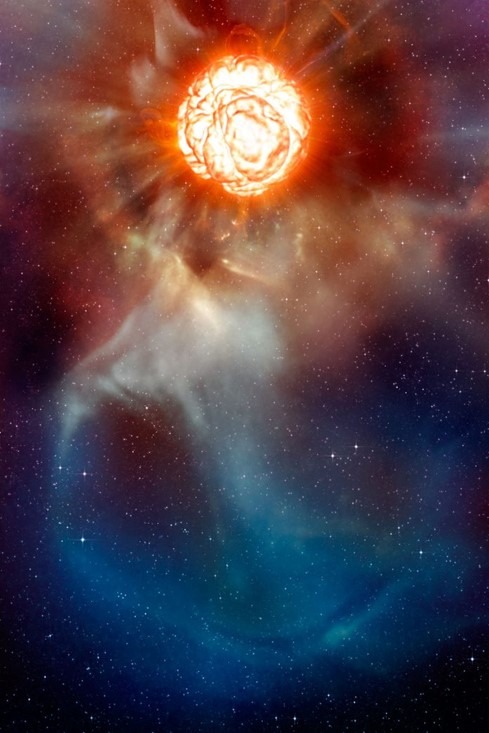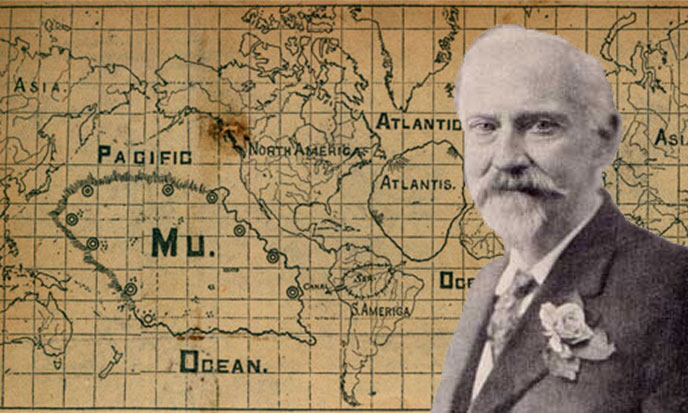Towards the end of last year, astronomers announced that star Betelgeuse has encountered a dramatic dip in brightness. There were comments announcing the imminent end of the star, which will become a supernova, which we will be able to see even during the day. Things are not so simple. I’ll try to explain why.
Betelgeuse is part of the constellation Orion and is the twelfth brightest star in the night sky.
A little bit of legend
I haven’t found a legend of the star, but I think it’s worth telling you the legend of the constellation that houses it. I will summarize the text from the Legends of Olympus by Alexandru Mitru, a book that I read, I still read, with great joy, since the time when I started to learn the alphabet.
“It is said that there once lived another hunter, named Orion, the son of a king, Hirieu. But the king’s son had grown so tall that his forehead passed over the fleece of the clouds, and as he entered the waves of the sea to bathe, in the place where the water was deeper, his chest remained outside.” Orion, a skilled hunter, had received from Poseidon the gift of being able to walk across the waters as if he had stepped on land.
He was summoned by the king of Chios to eradicate the spirits that had invaded the island. Orion bravely saves the entire island from dangerous creatures. The king of Chios wants to reward him and tells him that he will fulfill any wish he has.
“In return for his deeds, the hunter had asked the king’s daughter to marry him. But the king – refusing to give him the child – cunningly intoxicated the bold Orion, and as he slept soundly, he took out his both his eyes with the knife hidden under his royal robe.” Blind, Orion went to the island of Lemnos, where Hephaestus the blacksmith of gods dwelt, to ask for his help. He advises “Orion to sit, at the dawn of every morning, when Eos – the aurora – appears, with his eyes to the east, and he will be healed in time.” That’s what our brave man did and he slowly recovered from his suffering.
“It was just that, as he looked east to wait for his healing, the goddess Eos kept seeing him and she fell in love with the too-mighty Orion.” The goddess was so in love that she took him to Olympus. Seeing him, the goddess of hunting, Artemis, also falls in love with the giant Orion. The Olympian gods were overwhelmed with envy.
A mere mortal to arouse so much passion among the goddesses? Such a thing was unacceptable. Apollo devises a plan to get rid of Orion. He asks him to go hunting quickly. As Orion walks away, Apollo goes to Artemis and asks her if she can show her skill in archery. The goddess accepted and Apollo showed her a point in the distance.
You see, this was Orion. The goddess did not hesitate, she tensed her bow and released the killer arrow ”taking the life of our brave man. There was a terrible roar, and Orion collapsed. The sea turned purple with blood, and Eos began to mourn, in a sharp voice, “Artemis, thou hast slain my beloved!…” Artemis, without answering: “he rushed upon a golden cloud. She rushed to the place where the hunter was lying in waves and embraced him in love.
And overwhelmed with grief, she begged Zeus to raise Orion to the constellations, for her sake, so that he would not perish completely, so that she could see him daily. Zeus, the lord, agreed, seeing so much sadness, and put the hunter on the vault. It’s the constellation that, according to legend, is called Orion.”
Orion constellation
The star Betelgeuse
Betelgeuse is a red supergiant star, with a mass around 10 and 20 solar masses. It has an estimated radius about 887 to 955 times that of the Sun (if it were in the place of the Sun, Betelgeuse’s edge would exceed the orbit of Mars, approaching that of Jupiter); Betelgeuse lies at an approximate distance between 640 and 724 light-years from Earth.
Its life began about 10 million years ago. Like other extremely massive stars, immediately after the onset of thermonuclear reactions in its core, it evolved very quickly, leading to the loss of 18 to 20 solar masses from its original mass. Betelgeuse “consumed” all the hydrogen in its nucleus, which led to its strong compression, triggering helium fusion reactions. About 40,000 years ago, after entering this phase of the star’s evolution, as the pressure inside it increased greatly, the outer layers “swelled” and Betelgeuse became a supergiant star, as we see it us today.
I can also tell you that Betelgeuse is a semi-regular variable star with multiple periods of variation. The primary pulsations repeat every ~425 days, but the star also shows additional changes in brightness with periods of 100-180 days and 5.9 years. We will discuss later about this object.
The future of the star
I told you earlier that the hydrogen in Betelgeuse’s nucleus has been depleted as a result of nuclear fusion reactions, and the star has entered a new phase. Although in cosmic terms Betelgeuse is a young star, she has reached old age, inexorably heading for a violent and spectacular end. It will become a Type II supernova.
In the case of stars with a mass of less than four solar masses, nuclear fusion in the nucleus will stop after all the helium in the nucleus has been “burned”, resulting in carbon and oxygen. For fusion reactions to proceed, temperatures higher than 600 million degrees Kelvin would be needed. In the case of very massive stars, such as Betelgeuse, the gravitational forces involved will be huge, and the nucleus will compress a lot, reaching the temperatures necessary to continue the thermonuclear reactions in its core.
The nuclear reactions that start in this phase are very complex and there will be several types of nuclear fusion simultaneously. In other words, we are dealing with the so-called alpha process, through which helium nuclei fuse with other nuclei, resulting in increasingly massive nuclei.
Once the temperature in the star’s nucleus exceeds 600 million degrees Kelvin, the fusion of carbon nuclei with helium nuclei begins, resulting in oxygen nuclei. In turn, the oxygen nuclei fuse with the helium nuclei, resulting in neon nuclei and so on, resulting in increasingly heavier nuclei. From this moment we have a new source of energy inside the star’s core, which, temporarily, restores the balance between gravity and internal pressure and the core stabilizes.
This phase does not last very long, but only a few hundred years. When the energy resulting from the thermonuclear reactions can no longer maintain the stability of the nucleus, the process of compression and temperature rise resumes.
When the temperature reaches the value of one billion degrees Kelvin, the reactions of “burning” carbon continue, but at the same time, the reactions of “burning” of oxygen and magnesium in the nucleus intensify. This phase is also short, it only lasts about a year.
You can imagine that a new phase of contracting of the nucleus will occur, accompanied by an increase in temperature. When the temperature reaches 1.5 billion degrees Kelvin, as a result of fusion reactions, sulfur nuclei begin to be produced. When the temperature reaches 2.7 billion degrees Kelvin, iron nuclei are starting to be produced. Practically, in each stage of evolution of the nucleus is “burned ash” resulting from the previous stages.
Theoretical models for stars that have an initial mass between 20 and 25 solar masses (including Betelgeuse) show us an extremely rapid succession of these stages. Thus the “burning” stage of carbon lasts 600 years, that of neon only one year. Then events accelerate.
The stage of “burning” oxygen lasts half a year, that of silicon only one day. Over time, the core of the star is structured in the form of successive layers, similar to onion leaves. Thus, the core of the nucleus will be made of iron, the next layer will be made of silicon, followed, in turn, by one of oxygen, followed by one of neon, one of carbon and, outside, a layer of hydrogen.
The “onion-shaped” structure of a supergiant star’s core
Nuclear reactions occur simultaneously in different layers of the nucleus and the energy released so quickly leads to the “swelling” of the outer layers of the star. It becomes a supergiant star.
Other changes take place inside the stellar nucleus, which dies extremely spectacularly. There comes a time when the “fuel” is depleted and the energy produced by fusion reactions can no longer help to overcome the huge gravitational force.
I will detail this stage a bit. I remind you that nuclear fusion results in a higher amount of energy than the reacting nuclei. This is true for lighter cores than those of iron. Iron can fuse, but it absorbs energy during the process, which leads to a drop in temperature. Basically, in the center of the stellar core, in the area where we have the iron, the fusion reactions stop forever.
When the mass of the iron core reaches the so-called Chandrasekhar limit, which is 1.4 solar masses, it will collapse. In just one second, its diameter will drop from a few thousand kilometers to only 100 km. After a few more seconds the diameter will decrease even more, reaching 10 km. The energy released during this process is equal to that generated by the Sun for billions of years. A huge number of neutrinos and gamma photons are also produced. The latter have enough energy to disintegrate the iron nuclei. The process is called photodissociation. Continuous compression. After about a quarter of a second, a central area of the stellar nucleus, with a mass between 0.6 and 0.8 solar masses, will reach a density equal to that of an atomic nucleus. Already the electrons can no longer remain in their orbits and will be “swallowed” by protons, which, in turn, will turn into neutrons. Basically, the core of the stellar nucleus will become the equivalent of a neutron star. It is also the moment when a huge pressure wave occurs.
At the same time, the stellar nucleus cools, leading to a decrease in pressure in the immediate vicinity. The material in these layers will begin to fall at speeds of up to 15% of the speed of light. Very quickly he will encounter the pressure wave, which I told you about earlier, which moves at one-sixth the speed of light. This pressure wave would lose much of its power if it were not helped by the huge number of neutrinos produced during the collapse of the nucleus. In a few hours the shock wave reaches the outer layers of the star. Most of the stellar material will be scattered in space at speeds of thousands of kilometers per second. The energy released during this event is 100 times greater than the energy produced by the Sun in the last 4.6 billion years… It is estimated that about 96% of the mass of the star is spread in space…
But before the matter of the star is projected into space, something spectacular happens, something on which our very existence depends. I was telling you that in the nucleus of massive stars, nuclei with a mass at most equal to that of the iron nucleus are produced, through successive fusion reactions. During the event called supernova, the neutron flux increases strongly. When the nucleus of a supernova collapses, huge amounts of energy are also produced. Under such conditions, the atomic nuclei absorb neutrons, becoming more and more massive. Now let’s look at a single nucleus in the core of a supernova. At some point, one of its neutrons will turn into a proton plus an electron. The latter is expelled from the nucleus. Technically speaking, we can say that there has been a beta minus disintegration. After that, the initial core moves into the next box in the Periodic Table of Elements. The new nucleus can still absorb neutrons and the process resumes. Each time at the end of it, the nucleus advances with a position in Mendeleev’s table. This mechanism produces elements heavier than iron, elements without which life, as we know it, could not have occurred. Indeed, many of the atoms we are made of were “made” during the production of supernovae, in the last moments of life of supergiant stars.
The evolution of a type II supernova:
- The core is structured in layers around an inert, iron core.
- As soon as this core reaches the limit of Chandrasekhar it starts to collapse.
- The central part of the core reaches a density equal to that of an atomic nucleus.
- There is a pressure wave moving outwards. It meets the matter in the outer layers that falls to the center of the core.
- Neutrinos add extra energy to the pressure wave, which begins to move at supersonic speeds.
- The shock wave reaches the outer layers of the star. Most of the stellar material will be scattered in space at speeds of thousands of kilometers per second.)
During the production of the supernova we witness a spectacular increase in the brightness of the star, equivalent to the light emitted by an entire galaxy. For this reason, when Betelgeuse becomes a supernova, we will be able to see it in broad daylight. The brightness will gradually decrease over a period of several months. It will retain its brightness for several years, due to the radioactive decay of cobalt and nickel nuclei produced during the stellar catastrophe.
Will Betelgeuse become a supernova?
The dimming of the Betelgeuse star is a natural phenomenon. I remind you that we are dealing with a semi-regulated variable star. Something else is wrong. The first photometric observations of the brightness of the star Betelgeuse began more than 50 years ago, and it has been continuously monitored for 25 years now. During all this time, there has never been such a big and rapid decrease in the star’s brightness as in December 2019. Is this an indication that a supernova is about to occur?
The answer is negative. Rather, we still do not know when the extraordinary event will take place. It may occur tomorrow, but it is unlikely. Remember that the last processes before the supernova is produced are taking place extremely fast. In the current state of knowledge it is practically impossible to determine, only by studying the luminosity variations of the star, how close we are to that moment. It would require direct observation of the star’s core, which is impossible with the means available to astrophysicists today. Current theoretical estimates, based on physical-mathematical models, show that it is possible that Betelgeuse will become a supernova in the next 100,000 years.
Risks for earthlings?
During the evolution of a type II supernova, incredible amounts of energy are released, a significant part of it being in the form of deadly radiation. Several years ago I was reading alarming articles warning that the death of the star I am telling you about will result in the Earth bathing in a sea of gamma radiation, which will endanger terrestrial life. In fact, the answer is different. The star is far enough away from us that the risk is non-existent. For this supernova to affect us, it should be less than 50 light-years away from the Solar System. We will be able to safely enjoy this cosmic spectacle.
Conclusion
Perhaps none of today’s earthlings will witness the last moments of the life of the star Betelgeuse. But in a few decades, we will be able to witness a supernova, which is not as spectacular as Betelgeuse’s death. Recently, a team of researchers led by Bradley Schaefer of the University of Louisiana identified a binary system, V Sagittae, located 7,800 light-years away from us, which consists of a white dwarf star and a star with a mass equal to 3.3 solar masses. The two stars are in orbit around the common center of mass. Observations have shown that the two stars are rapidly approaching each other. Analyzing the movements of the two stars, the researchers determined that they will collide in 2083. A type Ia supernova will occur. From Earth we will see it with the naked eye for a few months, as a very bright spot, probably brighter than Venus.
See? The universe is a real spectacle. It really needs us, the Universe. We have the power to understand it and, above all, we have the ability to admire its beauty.







